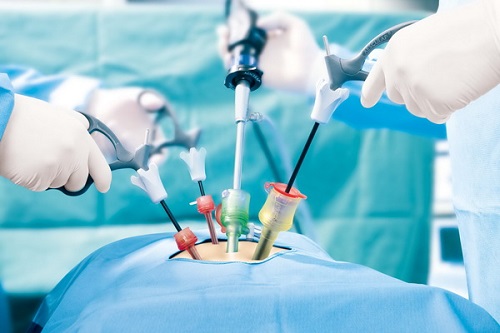Laparoscopy and Hysteroscopy

Laparoscopy and Hysteroscopy
Diagnostic hysteroscopy is a commonly performed gynecologic procedure to evaluate the endometrial cavity. This article focuses on the procedure of diagnostic hysteroscopy.
Broadly, 2 systems of diagnostic hysteroscopy exist: panoramic (also known as direct optical) and contact (also known as contact microhysteroscopy). Modern references to hysteroscopy usually imply a panoramic technique in which the uterine cavity is distended with liquid or gas and evaluated with the hysteroscope
Hysteroscopy is also used to examine the uterine cavity before women undergo in vitro fertilization. A slender instrument called a hysteroscope is inserted through the vagina and into the uterine cavity to look inside.
Diagnostic Laparoscopy
Laparoscopic Cystectomy
Laparoscopic Cystectomy is the removal of ovarian cysts. An oophorectomy is the removal of the ovaries, which can both diagnose and treat ovarian cysts by minimally invasive procedure where small incisions are made in the abdomen to insert a small camera and surgical instruments to record images that are then displayed on a monitor.
Symptoms
- No symptoms at all.
- Palpable mass or enlarged abdomen.
- Abdominal pain with fever.
- Difficulty passing stool or bloating.
Laparoscopic Myomectomy
Symptoms
- The most common symptom of uterine fibroids is period that is heavier than normal and lasts longer than normal.
- You may be palpable or may even be visible if it is large, resembling an early pregnancy, even though you might be menstruating.
- You may have urinary incontinence or frequent urination, especially when you lie flat.
- You may be constipated or feel pressure in your abdomen.
- Feeling of fullness in the abdomen due to a fast-growing fibroid that may become malignant (Cancerous).
- Some women experience painful sexual intercourse, but this symptom is uncommon.
- Infertility.
- Easy miscarriage.
Diagnosis
- Physical examination, both external and internal.
- Abdominal or transvaginal ultrasound.
- Computed tomography (CT) or magnetic resonance imaging (MRI).
- Hysteroscopy.
- Laparoscopy.
- Hysterosalpingography.
Treatment
- If the fibroid is small, the doctor may recommend monitoring it or using medication and follow up with ultrasound as well as assess any vaginal bleeding associated with the growth The doctor may also test you for anemia. You will likely see your obstetrician/gynecologist (OB/GYN) every three to six months.
- If the fibroid causes excessive bleeding, medication may be prescribed to reduce the amount of blood that is lost.
- Myomectomy.
- Hysterectomy to remove the uterus (only in severe cases where the patient no longer wishes to have children).
Laparoscopic Hysterectomy
- Open, traditional hysterectomy. This involves a six to twelve inch incision made in the abdominal wall.
- Vaginal Hysterectomy. This involves removing the uterus through the vagina. This approach is better than the open, traditional hysterectomy, but still does not allow the surgeon a full view of the surrounding organs, including the bladder.
- Robotic-Assisted Radical Total Laparoscopic Hysterectomy. Using a state-of-the art robotic platform allows the surgeon a full view of the surrounding organs and more precise control over incisions.
- Significantly less pain
- Less blood loss
- Fewer complications
- Less scarring
- A shorter hospital stay
- A faster return to normal daily activities
- Decreased risk of infection
